Disclosure: This article contains affiliate links. We may earn a commission from purchases at no extra cost to you, which helps our travel content.
The first time I wandered Mumbai's streets after sunset, I felt as though I'd stepped into an entirely different city than the one I'd been exploring just hours before. As darkness falls, Mumbai transforms—its chaotic daytime energy shifts into something more contemplative yet equally vibrant. The city reveals layers that remain hidden in daylight, much like those fascinating marginalia notes I used to discover while editing manuscripts. Having documented urban landscapes across five continents, I can confidently say that Mumbai after dark offers a visual narrative unlike any other—a perfect blend of colonial architectural grandeur illuminated by modern lights, bustling night markets that pulse with life until dawn, and quiet corners where centuries of history seem to whisper through the shadows. This weekend photography expedition through nocturnal Mumbai became one of the most compelling urban exploration experiences of my career, challenging both my technical skills and my understanding of this complex metropolis.
Preparing for Mumbai's Nocturnal Canvas
Mumbai demands preparation, particularly for night photography expeditions. Having learned hard lessons in similar megacities from Cairo to Mexico City, I approached this weekend adventure with methodical planning that would have made my former editorial colleagues proud.
First, equipment considerations: Mumbai's humid climate can wreak havoc on camera gear. My camera backpack proved invaluable, with its weatherproof exterior protecting my equipment from both unexpected rain showers and the perspiration that inevitably accompanies Mumbai's tropical climate—even in winter. I packed silica gel packets between my lenses and brought a microfiber cloth for regular lens cleaning.
Security deserves serious consideration when photographing at night. I opted for a cross-body camera strap rather than a neck strap, making it more difficult for opportunistic thieves. My most valuable gear remained concealed in my backpack until needed. For extra security in crowded areas like Chhatrapati Shivaji Terminus or Crawford Market after hours, I used a small portable lock to secure my backpack zippers—subtle but effective.
Navigation proved another critical preparation point. While I typically rely on digital maps, Mumbai's labyrinthine streets demand redundancy. I downloaded offline maps before departure and carried a small physical map as backup. More importantly, I researched specific night photography locations in advance, noting opening hours and potential access issues. The Marine Drive promenade, for instance, remains accessible all night, while heritage buildings may require advance permissions for tripod photography.

💡 Pro Tips
- Use silica gel packets to protect camera equipment from Mumbai's humidity
- Consider a cross-body camera strap instead of a neck strap for better security
- Download offline maps before heading out as backup for areas with poor connectivity
Marine Drive: Mumbai's Shimmering Necklace
Marine Drive—aptly nicknamed 'The Queen's Necklace'—transforms after sunset into a sweeping arc of golden lights that curve elegantly along the Arabian Sea. Having photographed coastal cities from Cape Town to Sydney, I can attest that few urban waterfronts offer such a perfect marriage of natural and human-made elements for night photography.
I arrived at Marine Drive just before blue hour (that magical period shortly after sunset when the sky turns a deep blue before blackening completely). Positioning myself near Chowpatty Beach provided the ideal vantage point to capture the entire sweep of the illuminated promenade. The challenge here lies in balancing exposure—the bright street lamps against the darkening sky create extreme contrast that requires careful bracketing.
My approach was to set up my travel tripod on the seawall and shoot a series of bracketed exposures, later blending them to preserve both the twinkling lights and the rich blue tones of the evening sky. A neutral density gradient filter helped tame the city lights without darkening the sea.
What struck me most was how Marine Drive serves as Mumbai's great equalizer after dark. Couples strolled hand-in-hand, families spread picnics on the concrete barriers, and solitary figures gazed contemplatively at the horizon—all sharing the same spectacular view regardless of the vast socioeconomic divisions that characterize daytime Mumbai.
Beyond the postcard-perfect panorama, I found compelling human stories along the promenade: late-night chai vendors with their carts illuminated by single bulbs, creating perfect pools of light for environmental portraits; taxi drivers napping in their iconic black and yellow cabs; and young photographers like myself, tripods positioned precariously on the seawall, chasing that perfect shot of Mumbai's most iconic nightscape.

💡 Pro Tips
- Visit during blue hour (20-30 minutes after sunset) for the best balance of ambient light and illuminated buildings
- Use bracketed exposures to capture both the bright lights and darker sea areas
- Include human elements in your compositions to convey the social importance of Marine Drive after dark
Chhatrapati Shivaji Terminus: Gothic Revival After Hours
The Victorian Gothic splendor of Chhatrapati Shivaji Terminus (formerly Victoria Terminus) takes on an almost mystical quality after sunset. This UNESCO World Heritage site—a cathedral to transportation rather than religion—reveals architectural details under nighttime illumination that remain hidden in daylight's harsh glare.
Having documented historic railway stations from London's St. Pancras to Istanbul's Sirkeci, I found CST uniquely challenging to photograph. The constant flow of commuters (even at midnight) means tripods can become obstacles. I discovered that positioning myself across the street near the municipal building provided both safety and an excellent wide-angle perspective.
The building's intricate façade, with its stone carvings, gargoyles, and peacock-filled windows, becomes dramatically highlighted by strategically placed floodlights after dark. Rather than attempting to capture the entire structure, I found success in isolating architectural details—the illuminated clock tower against the night sky, the play of light and shadow on stone gargoyles, the grand entrance archways framing the still-bustling human activity within.
Technically speaking, this location demanded my fastest lenses. My prime lens became invaluable, allowing handheld shooting at lower ISOs while maintaining crisp details. For wider perspectives, I braced my camera against solid surfaces as makeshift stabilization.
What fascinated me most was how this colonial-era building transforms after dark into something quintessentially Indian. The warm yellow lighting against the gray stone creates a golden glow that feels more aligned with India's aesthetic sensibilities than Victorian England's. Meanwhile, the constant human movement—late-night travelers, railway workers, and street vendors—creates light trails and motion blur that convey Mumbai's perpetual energy.

💡 Pro Tips
- Shoot from across the street near the municipal building for the best wide-angle view
- Focus on architectural details highlighted by night lighting rather than trying to capture the entire structure
- Use a fast prime lens with wide aperture for handheld shooting
Crawford Market: Nocturnal Commerce
While most tourists experience Crawford Market (officially Mahatma Jyotiba Phule Market) during daylight hours, arriving after 10 PM revealed a completely different world—one of frantic preparation and behind-the-scenes labor that makes Mumbai's daily commerce possible. As an editor, I've always been drawn to these hidden processes, the unseen work that creates the final product.
The market's Gothic exterior, designed by British architect William Emerson in the 1860s, takes on a haunting quality at night, with spotlights creating dramatic shadows across the façade. But the real photographic treasure lies inside and in the surrounding streets, where wholesale deliveries create a nocturnal ecosystem of commerce.
Photographically, this environment presents significant challenges. The lighting is inconsistent—harsh fluorescents in some areas, near darkness in others, with occasional bright spots from vehicle headlights. I found success by embracing this high-contrast reality rather than fighting it. Using spot metering and exposing for mid-tones allowed me to capture the dramatic lighting conditions authentically.
The human element proved most compelling here. Porters unloading massive sacks of produce from trucks, their faces illuminated by single bare bulbs; flower sellers preparing tomorrow's garlands under the glow of LED strips; butchers cleaning their stalls with the day's work finally done. These environmental portraits tell the story of Mumbai's commercial underbelly far more effectively than architectural shots alone.
I approached photography here with particular sensitivity. These workers weren't performing for tourists but earning their livelihoods. I made conversation first, using my limited Hindi and much smiling, and always showed subjects their images on my camera's LCD screen. This approach generally resulted in permission to continue photographing and often led to being shown aspects of their work I might otherwise have missed.

💡 Pro Tips
- Visit after 10 PM to capture the wholesale delivery activities that happen overnight
- Use spot metering and expose for mid-tones in the challenging mixed lighting conditions
- Always ask permission before photographing workers, and show them the results on your camera
Bandra Worli Sea Link: Engineering Illuminated
The Bandra Worli Sea Link represents modern Mumbai's architectural ambitions—a sweeping cable-stayed bridge that seems to float above the Arabian Sea. While impressive by day, it's after sunset that this engineering marvel truly becomes a photographer's dream.
I've photographed iconic bridges worldwide—from San Francisco's Golden Gate to Sydney Harbour Bridge—and found that each presents unique challenges and opportunities. For the Sea Link, the key challenge is finding the optimal vantage point. After scouting several locations, I discovered that Bandra Fort provides the perfect elevated perspective to capture the bridge's elegant curve illuminated against the night sky.
Timing proved crucial. Arriving during blue hour (just after sunset) allowed me to capture the bridge with its lights on while still retaining detail in the sky and water. The gradual transition from deep blue to black created a perfect 15-20 minute window for dramatic exposures.
Technically, this location demands stability. My remote shutter release proved invaluable for eliminating camera shake during long exposures. I experimented with exposure times between 15-30 seconds to capture light trails from vehicles crossing the bridge, creating dynamic streaks of red and white that conveyed the bridge's function beyond its form.
What struck me most was how this modern structure has been embraced by Mumbaikars as a symbol of their city's future—much like the Gateway of India represented an earlier era. Couples posed for selfies with the illuminated bridge in the background, families spread picnics on viewing areas, and fellow photographers shared tripod space in a collegial atmosphere.
Beyond the postcard shot, I found compelling compositions by including silhouetted fishing boats in the foreground, creating a powerful juxtaposition between traditional and modern Mumbai. The contrast of scale—tiny fishing vessels against the massive illuminated span—tells a story about Mumbai's ongoing transformation more effectively than either element alone.

💡 Pro Tips
- Shoot from Bandra Fort for the best elevated perspective of the entire bridge
- Visit during blue hour (just after sunset) when the bridge lights are on but the sky still has color
- Use long exposures (15-30 seconds) to capture light trails from vehicles crossing the bridge
Navigating Mumbai's Streets After Dark
Safety and logistics require special consideration when photographing Mumbai after dark. Drawing on two decades of urban exploration across five continents, I've developed strategies that served me well in this complex megacity.
Transportation becomes both subject and necessity after dark. Mumbai's iconic black and yellow taxis offer not just transportation but photographic opportunities—their vintage Fiat design and colorful interiors create perfect frames for the city beyond their windows. For longer distances, I relied on ride-sharing apps, saving screenshots of my destinations in Hindi to overcome potential language barriers.
For women photographers exploring solo, as I was, Mumbai offers relative safety compared to many global cities, but common-sense precautions remain essential. I dressed conservatively, wore minimal jewelry, and kept expensive equipment concealed when not in use. Most importantly, I projected confidence—walking purposefully rather than hesitantly, even when slightly disoriented (an editor's trick I've long employed: act as though you belong until you figure out where you actually do belong).
While photographing in more crowded areas like Mohammed Ali Road after dark, I occasionally hired local guides through my hotel. Beyond security, these guides provided cultural context and access to locations I might have missed otherwise. One guide, Rajesh, introduced me to a rooftop chai stall near Minara Masjid that offered spectacular elevated views of the illuminated street market below—a perspective I would never have discovered independently.
Perhaps most importantly, I balanced ambition with awareness. Certain areas that make compelling photographic subjects during daylight hours become inadvisable after dark. I researched neighborhoods thoroughly before visiting and always trusted my instincts—if an area felt uncomfortable, I moved on regardless of its photographic potential. This selective approach still left me with more nocturnal photographic opportunities than I could possibly capture in a weekend.

💡 Pro Tips
- Use ride-sharing apps for longer distances and save screenshots of destinations in Hindi
- Consider hiring local guides through your hotel for access to lesser-known viewpoints and added security
- Trust your instincts—if an area feels uncomfortable after dark, move on regardless of photographic potential
Final Thoughts
As I reviewed my images on the flight home, Mumbai after dark revealed itself as a city of magnificent contradictions—ancient and futuristic, chaotic yet orderly, overwhelming but surprisingly navigable. Like the best manuscripts I've edited, Mumbai doesn't reveal its full story on first reading; it demands careful attention to marginalia, to the spaces between obvious narratives. Night photography provides that deeper reading, illuminating both literal and metaphorical shadows that daylight obscures. For photographers willing to venture beyond tourist hours and postcard perspectives, Mumbai offers an unparalleled urban canvas after sunset. The city never truly sleeps; it merely shifts into different rhythms, telling different stories through its illuminated architecture, nocturnal commerce, and the resilient spirit of its people who make their lives in the hours between dusk and dawn. I left with memory cards full but still feeling I'd barely scratched the surface—the mark of a destination worthy of return.
✨ Key Takeaways
- Mumbai transforms completely after dark, revealing aspects of the city invisible during daylight hours
- Night photography in Mumbai requires careful preparation, including security considerations and equipment protection
- The best locations combine architectural elements with human stories that convey Mumbai's unique energy
- Local guides can provide access to lesser-known vantage points while adding security and cultural context
📋 Practical Information
Best Time to Visit
November through February (winter) offers pleasant temperatures and clear skies ideal for night photography
Budget Estimate
$150-200/day including mid-range accommodation, transportation, food, and local guides
Recommended Duration
Minimum 3 nights to capture key locations during optimal lighting conditions
Difficulty Level
Intermediate - Requires Basic Night Photography Skills And Urban Navigation Confidence
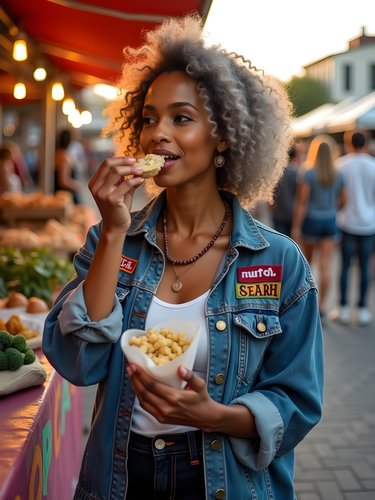
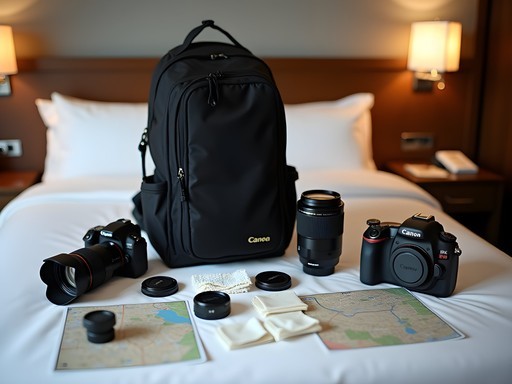







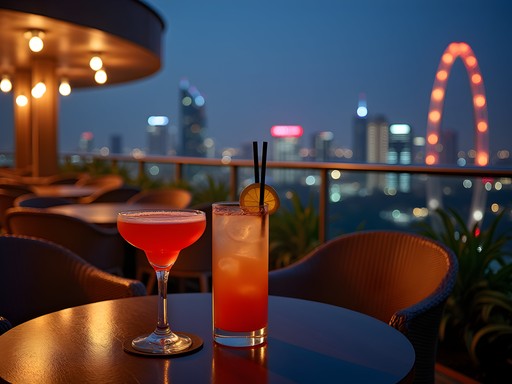
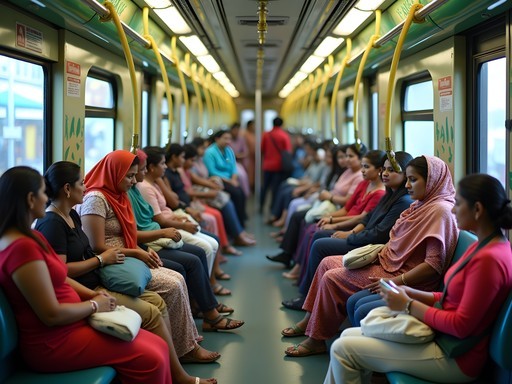
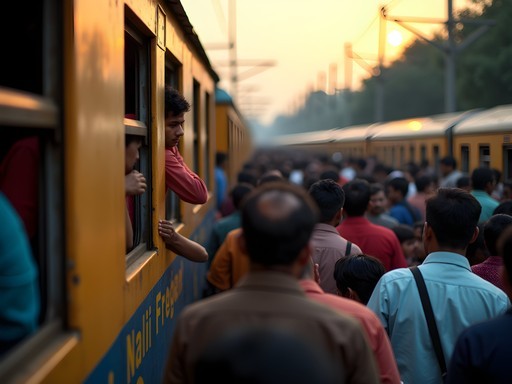
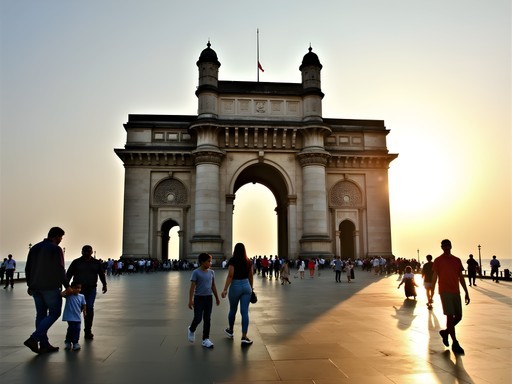
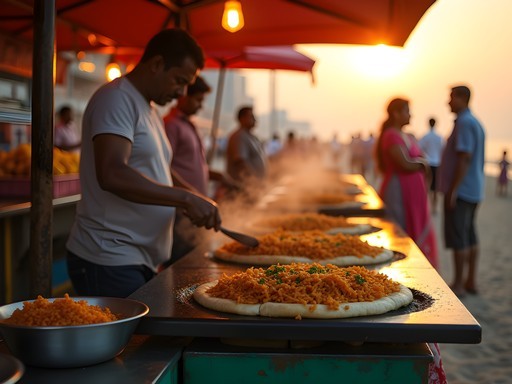



Comments
vacationlife
Has anyone tried photographing the dabbawallas in the early morning? I've heard they start super early and it could make for interesting shots with the dawn light. Not sure if it's worth setting an alarm for 5am though!
cityguide
100% worth it! Did this last year. Head to Churchgate Station around 6:30-7am. Amazing energy and they don't mind photos if you're respectful and stay out of their way.
Megan Martin
Leah, excellent coverage of Mumbai's nocturnal landscape. I was there on business last quarter and extended my stay specifically to explore the city after hours. Your section on preparing for night photography is spot-on. I'd add that ride-sharing apps are invaluable for safely navigating between photo locations at night. Also, don't miss Bandra-Worli Sea Link illuminated after dark - it's spectacular from Bandra Fort viewpoint. The juxtaposition of modern architecture against the ancient city backdrop creates compelling visual narratives. Looking forward to your next night photography guide!
moonnomad
That shot of CST with the light trails from passing cars is incredible! Saving this for my trip next month.
Kimberly Murphy
Leah, you've captured the electric energy of Mumbai after dark so beautifully! I've done night photography in cities across Asia, and Mumbai is definitely one of the most rewarding. For anyone inspired by this post, I'd add Crawford Market to your night photography list - the contrast between the Victorian architecture and the bustling activity creates such dynamic shots. Also, don't miss Bandra-Worli Sea Link if you can get there around sunset - the transition from golden hour to the illuminated bridge is spectacular. One safety tip I always share: I use a black gaffer tape to cover camera brand names/logos when shooting at night in any city. It's a small thing but helps make expensive gear less obvious to opportunistic thieves.
Leah Clark
That gaffer tape tip is brilliant, Kimberly! Wish I'd thought of that. And yes, the Sea Link is magical at twilight - I didn't include those shots in this post but maybe I should do a follow-up!
winternomad
OMG these photos are AMAZING!!! 😍😍 Going to Mumbai in November and now I HAVE to try night photography! What camera settings did you use for the street scenes? I'm still figuring out my new camera!
Leah Clark
Thank you! For street scenes, I typically used f/2.8, ISO 1600-3200, and shutter speeds between 1/60 and 1/125. The key is finding a balance between freezing motion and letting in enough light. Have fun in November - perfect weather for exploring!
Casey Andersson
Leah, your post brought back such vivid memories of my time in Mumbai last winter! I stayed at the Taj Mahal Palace Hotel with a harbor-facing room that gave me the perfect vantage point for some night shots of the Gateway of India. The contrast between the floodlit monument and the inky harbor waters was incredible. I actually hired a photography guide too - a local university student who showed me some hidden spots in Colaba that tourists rarely find. We ended the night at a rooftop bar overlooking Marine Drive where I captured my favorite time-lapse of the trip. One tip for anyone planning a similar adventure: I used my camera bag which was perfect for night photography excursions - discreet enough not to scream 'tourist with expensive gear' but secure and easy to access when I needed to change lenses quickly.
adventuremaster
Is it safe to wander around Mumbai at night with camera gear?
Leah Clark
Great question! I stuck to well-populated areas and went with a local photography guide for some of the less touristy spots. Marine Drive and CST are generally quite safe even at night as there are always people around. Just use common sense - don't flash expensive gear unnecessarily and be aware of your surroundings.
moonnomad
I'd second that. Been to Mumbai twice and felt safe in main areas. Just don't wander into unknown neighborhoods alone.
coffeenomad7800
Your photos of Marine Drive at night are absolutely stunning, Leah! I was in Mumbai last year and tried to capture that 'Queen's Necklace' view but my shots came nowhere close to yours. Did you use a tripod? I was balancing my camera on random surfaces which probably explains a lot 😂 The CST building looks magical in your night shots too - I only saw it during daytime and missed that gorgeous lighting completely.
Leah Clark
Thanks so much! Yes, a tripod was essential for those Marine Drive shots. I used a compact travel tripod that didn't draw too much attention but gave me the stability for those longer exposures. CST is definitely worth seeing both day and night - completely different experiences!
coffeenomad7800
Noted for next time! Guess I need to invest in a proper travel tripod rather than using water bottles and random ledges 😅
escapeone
OMG I need to visit Mumbai now!!! Those lights on Marine Drive look magical! 🤩
cityguide
Pro tip: Crawford Market is amazing for night photography but closes early. Go around 6-7pm when it's just getting dark but still bustling.
Venture X
Premium card with 2X miles, $300 travel credit, Priority Pass